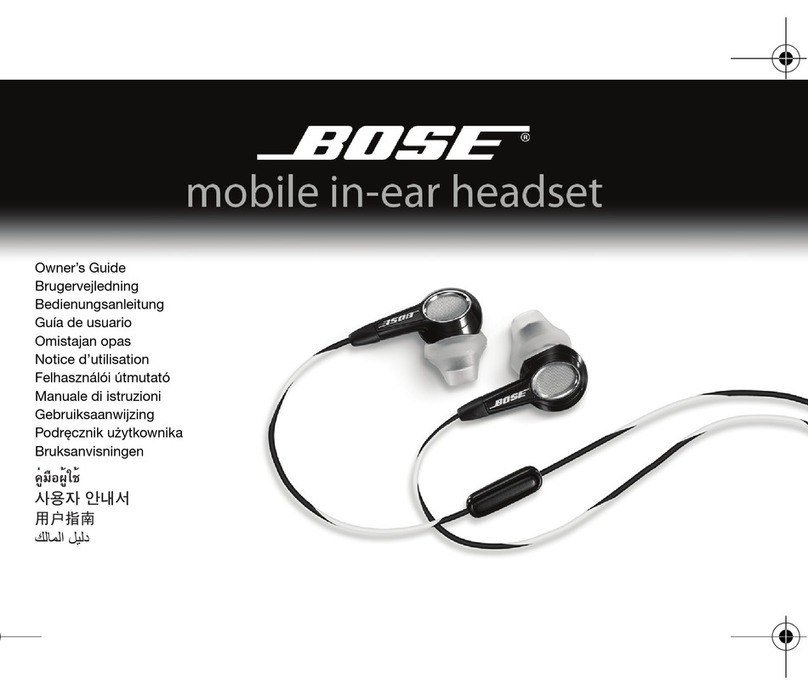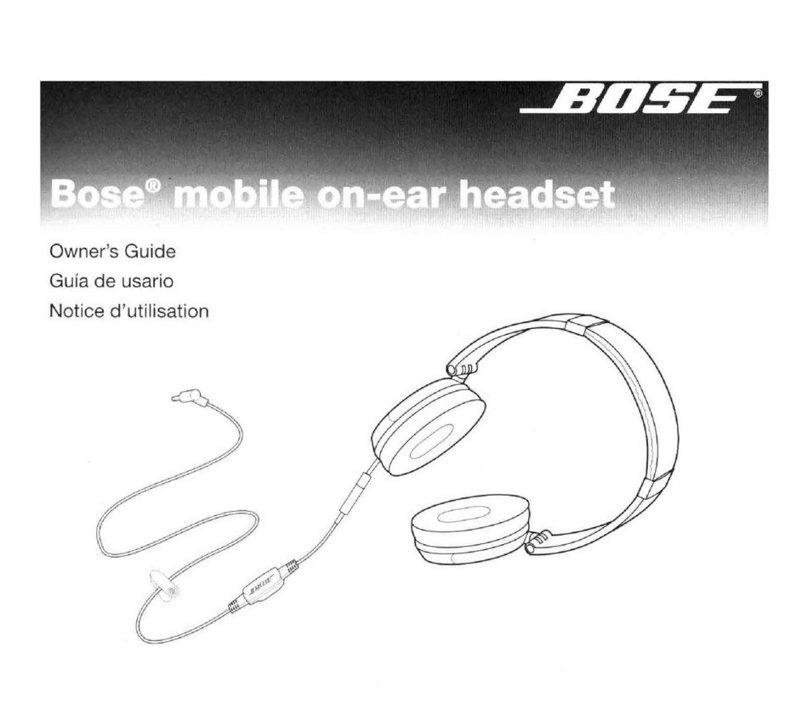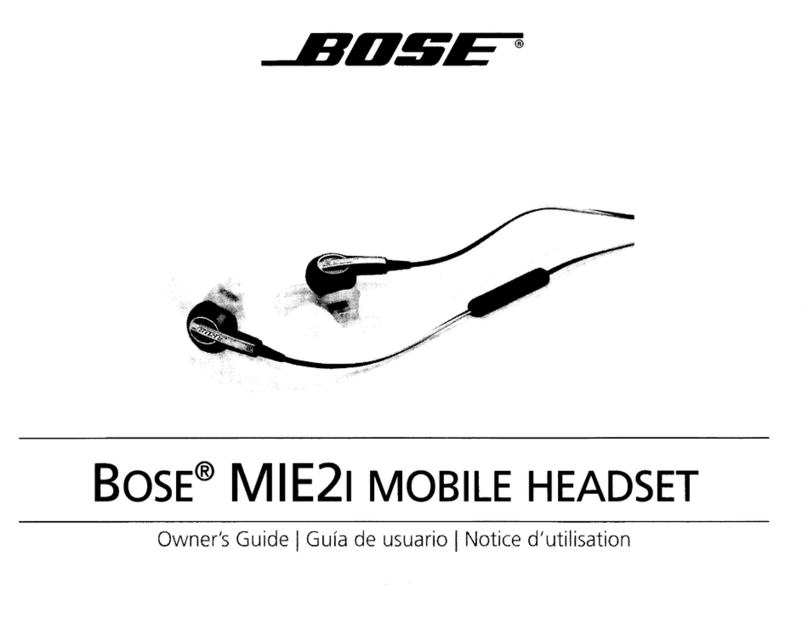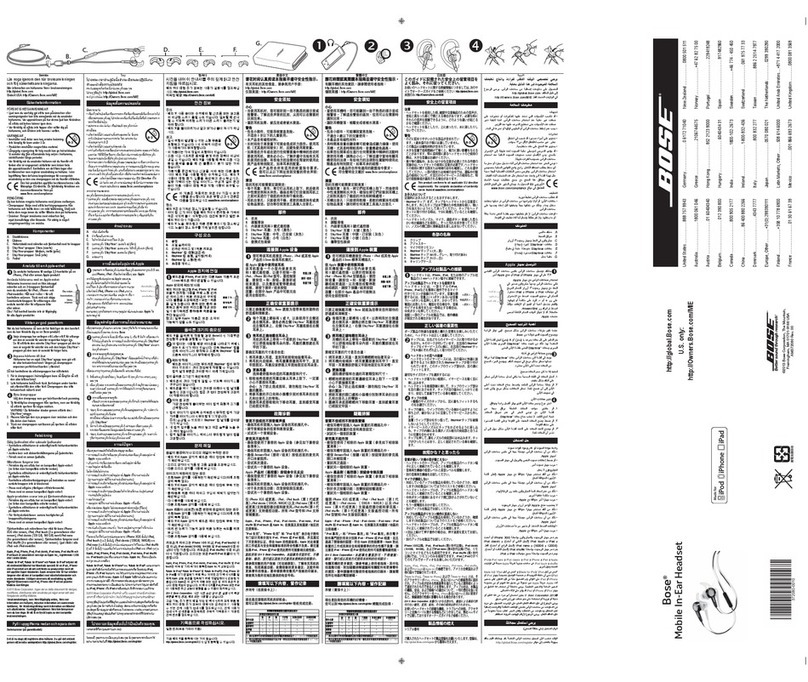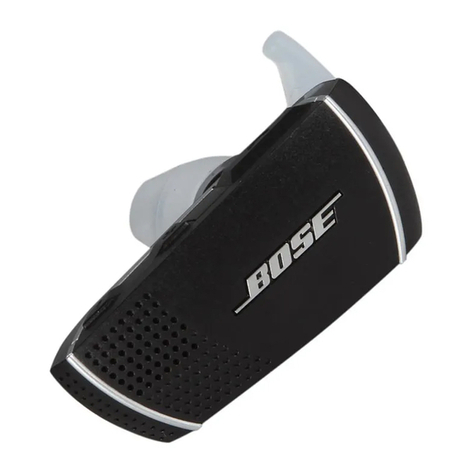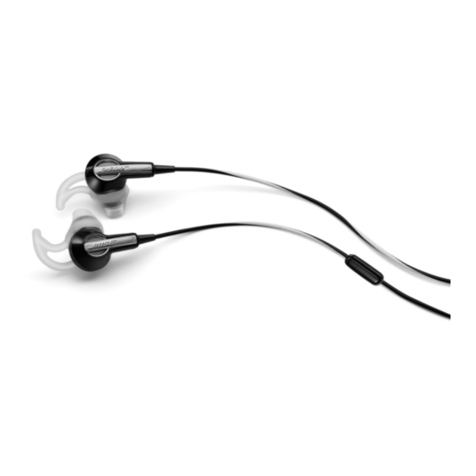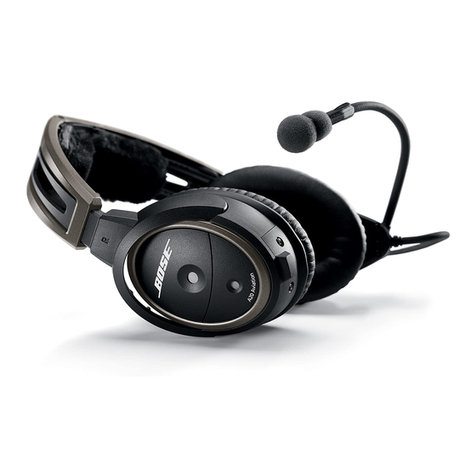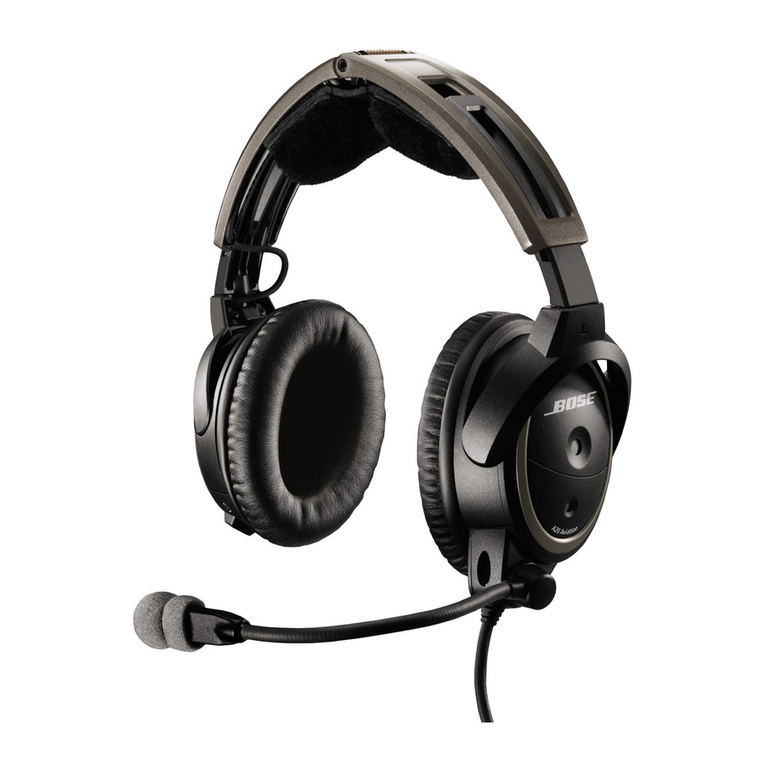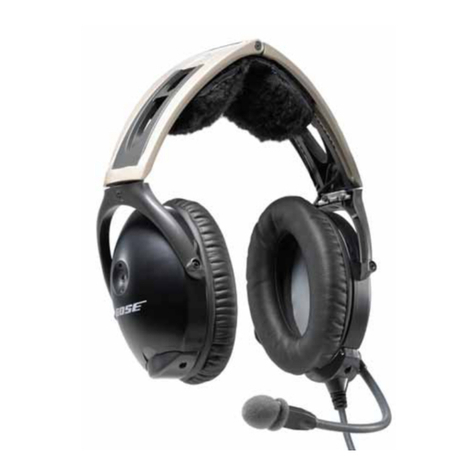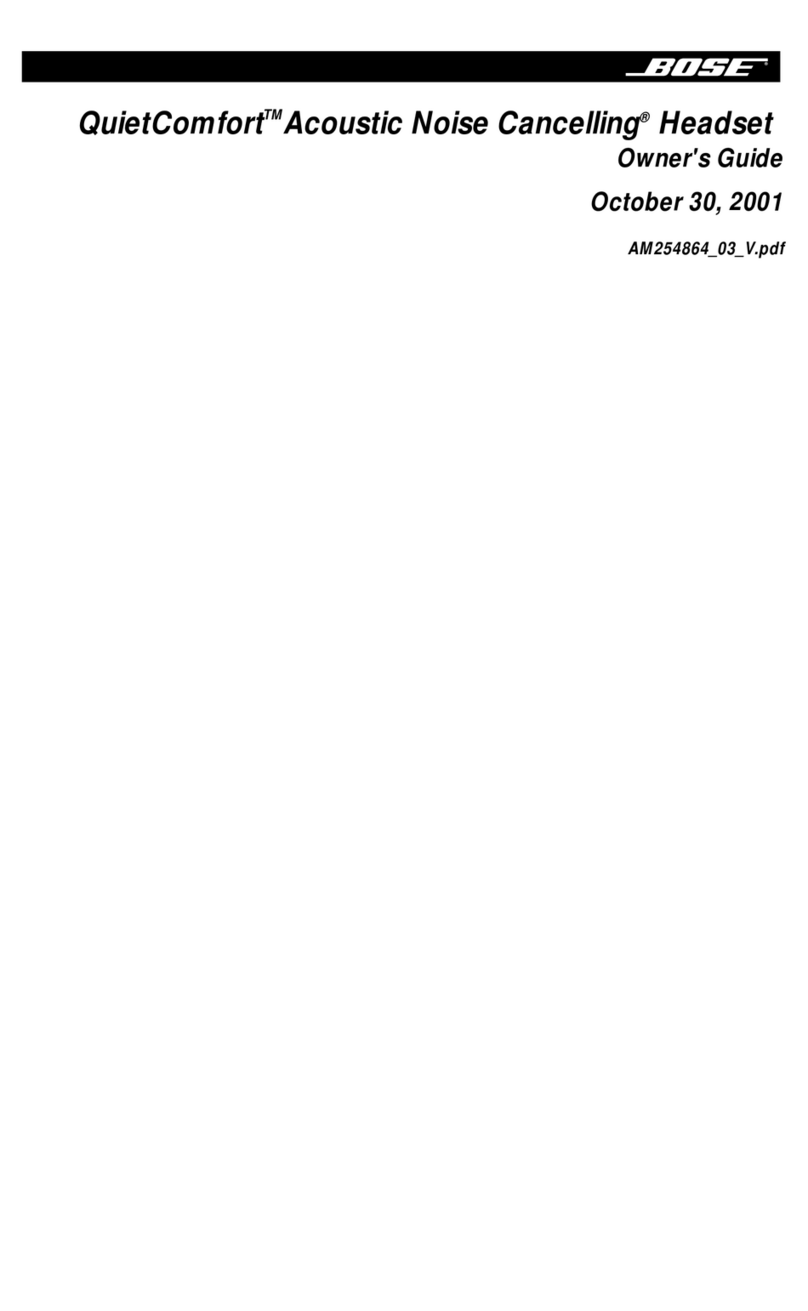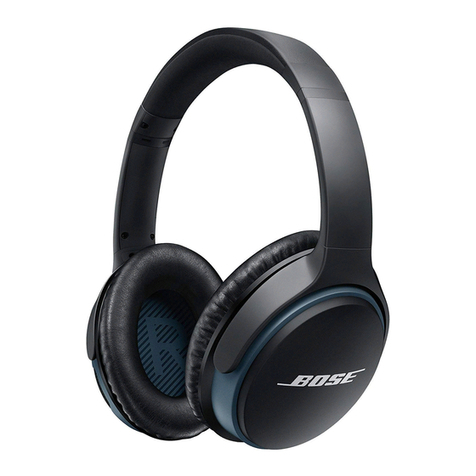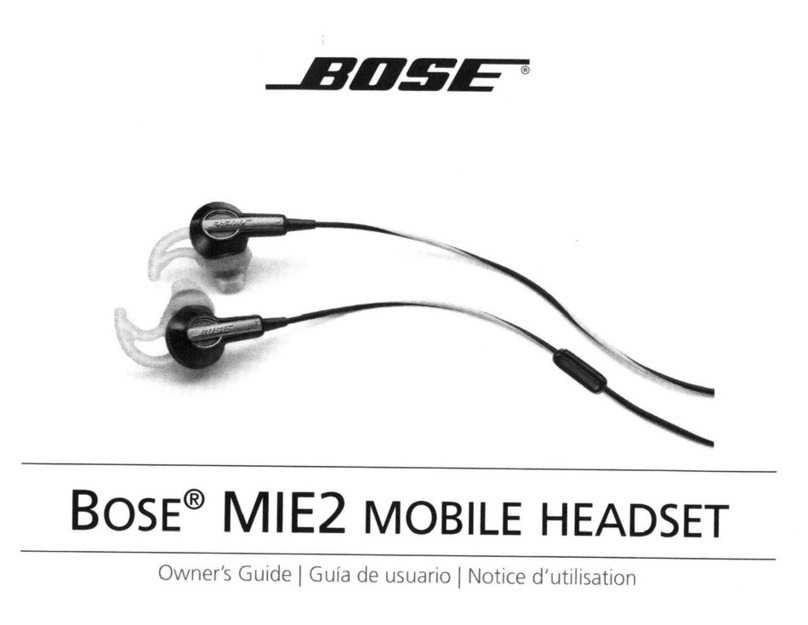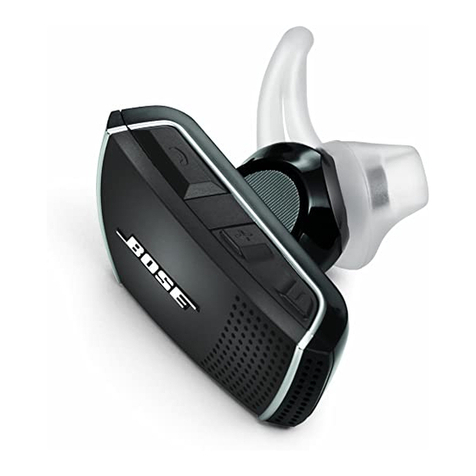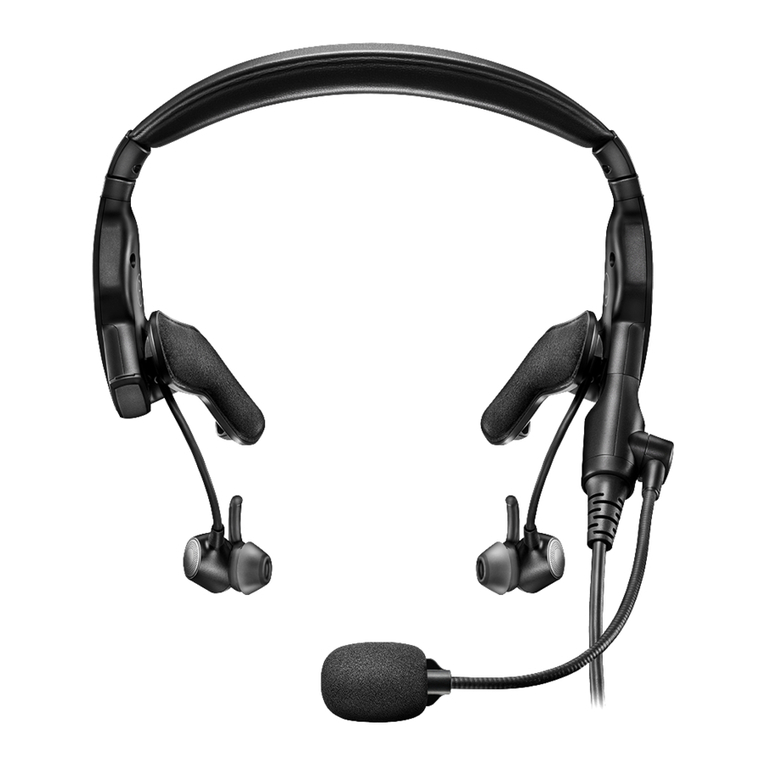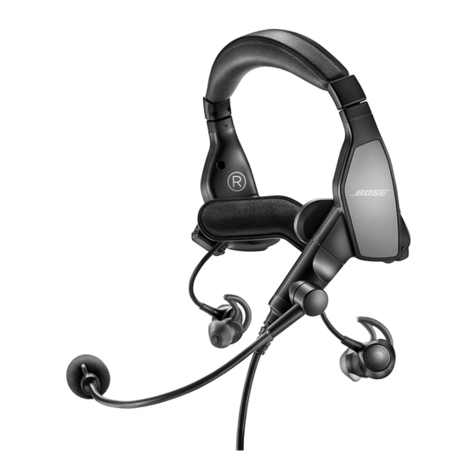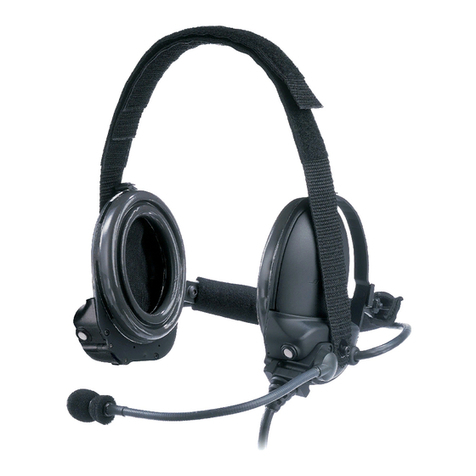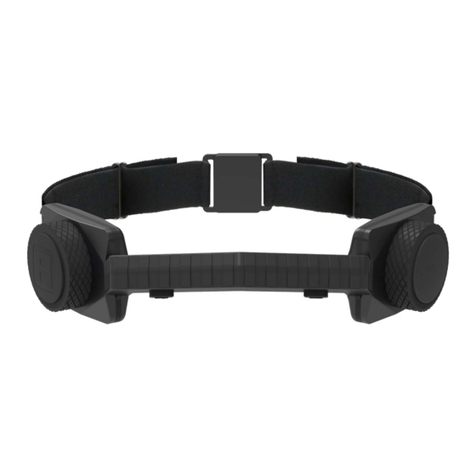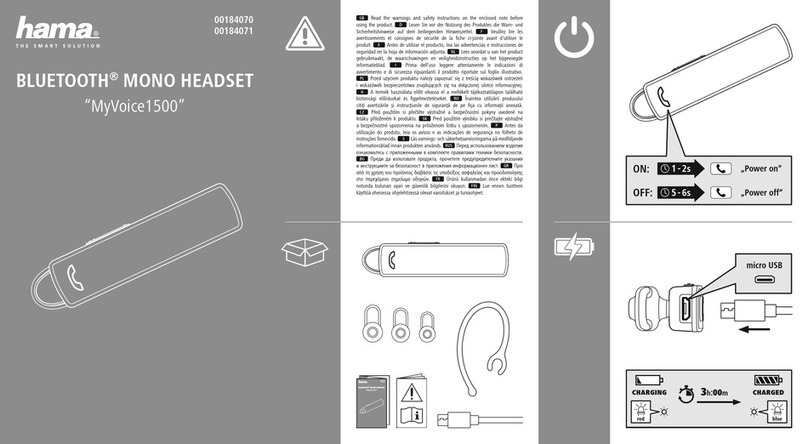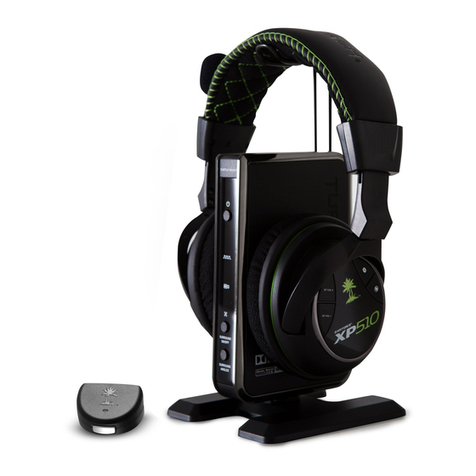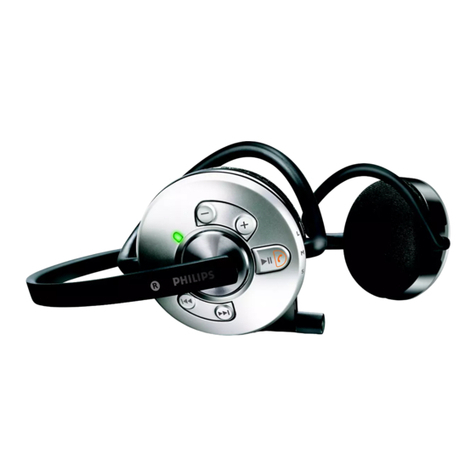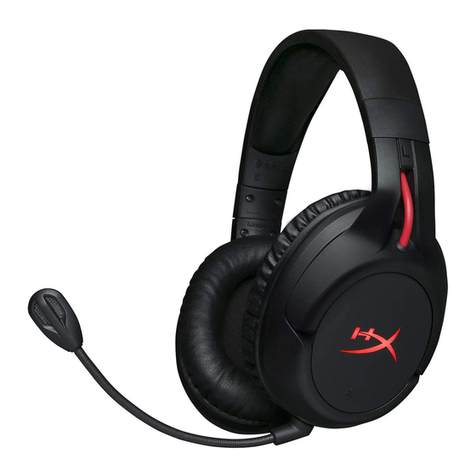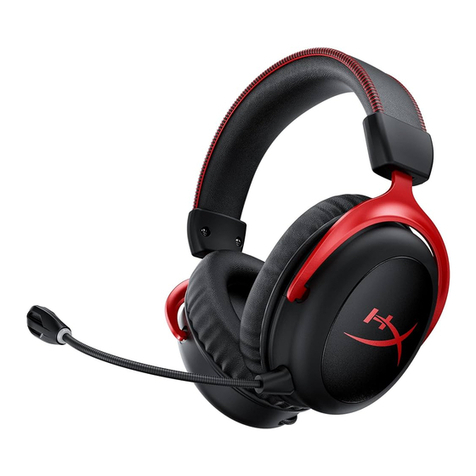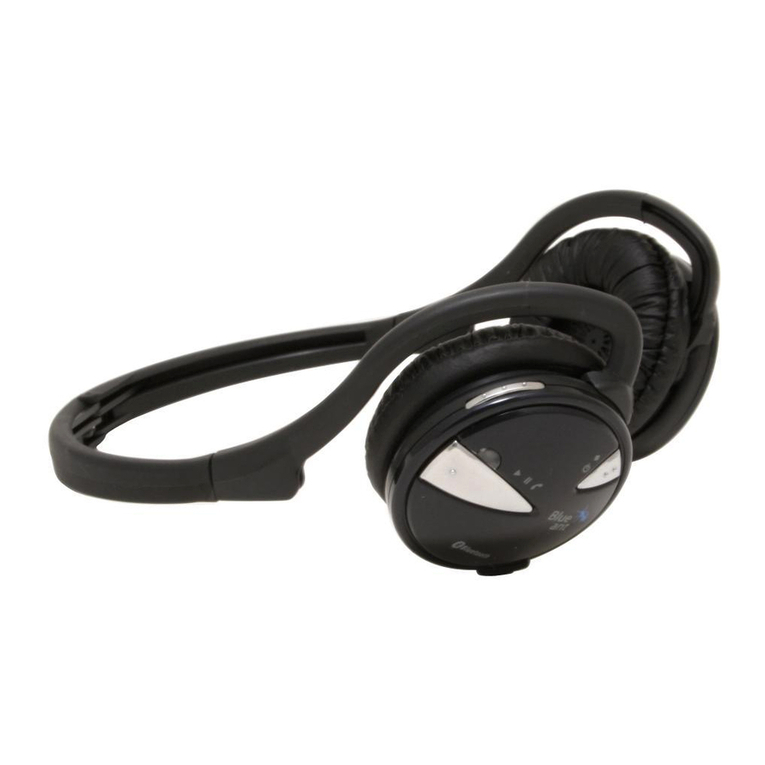
7
The T5 headset is capable of working in noise environments with sound pressure levels up to
115dB(C) SPL which means it is most useful in small and large wheeled vehicles as well as
many fixed and rotary wing aircraft.
The T5 headset consists of four main assemblies:
1. An active noise canceling headphone (two ear cups with ear cushions)
2. A suspension system (Napeband with over-the-head Velcro straps to support the weight)
3. A control cable assembly which provides power management, houses the necessary user
interface controls and adapts the headphone to the customer’s needs (by changing cables
to be compatible with desired source). The control cable assembly can be removed from the
earcups and replaced in the field.
4. A noise canceling boom microphone enabling communications. The microphone can be
easily replaced in the field.
The earcups each contain external-facing microphones and circuitry to allow Talk-Through, or
the ability to monitor external sounds such as speech without having to lift the earcups off of the
ear. This talk-through (TT) circuit limits external sounds to be no greater than 85dB at the ear.
The T5 headset has a volume control for the talk-through feature with volume settings will be
OFF; unamplified, medium amplification and high amplification. In all settings, the above men-
tioned 85dB limit is enabled.
The ear cushions used on the headset contribute to the performance as well as the overall
comfort of the headset. The ear cushions consist of polyurethane foam inside a polyurethane
film.
The napeband consists of a single, arc shaped spring formed to tuck behind the nape of the
user’s neck and head and to provide the desired clamping force. Two yokes connect the spring
to the earcups. The assembly is adjustable to fit most head sizes. The yokes and earcup
interface allow for rotation in 2 axes in order to allow optimum fit for performance as well as for
comfort. Additionally, the assembly includes a soft pad to provide cable routing and a comfort-
able fit behind the head for extended wear periods. The napeband / yoke assembly can be
completely disconnected from the earcups for replacement.
The control cable mates to the bottom of the left ear cup via a connector and housing that is
screwed to the earcup for robustness. This housing also mounts the flexible gooseneck boom
with integral noise canceling boom microphone. The control module contains a smart power
management system which can power the headset off of an external (vehicle) power source or
can use the on-board 2 AA batteries. In either case, the headset is fully functional to provide
active noise reduction (ANR), clear two way communications and talk-through capability. The
headset is also configured to provide passive noise reduction and clear two way communica-
tions when there is no power source (fail safe mode). The control module is configurable via
cable selection to enable connection of up to two input sources at any one time including inter-
coms, portable communication radios or other auxiliary audio or communication devices.
The control module also includes an integrated clothing clip that enables the module to be
securely mounted to a variety of clothing or equipment in a variety of orientations that best suit
the application at hand. The clothing clip can be mounted on both the front and the back face of
the control module in order to facilitate operation with either the left or the right hand or to cater
to different user preferences.
PRODUCT DESCRIPTION

